2010 Ford Fiesta Euro-Spec: First Drive

Ford is planning to get back into the sub-compact segment in North America and is about to launch the European designed Fiesta here next year. But before we go any further, I’d like to clear up a misconception and I’m sure Ford will thank me for doing so.
Get the Flash Player to see this player.
FAST FACTS
| 1. The Euro-Spec Fiesta is powered by a 1.6-liter, 4-cylinder with 119-hp. |
| 2. The Fiesta is an entirely different vehicle from the dreadful Festiva, which was sold here in the late ‘80s and early ‘90s. |
| 3. To date more than 12 million Fiestas have been sold worldwide. |
| 4. The North American Fiesta will be manufactured at Ford’s Cuautitlan Assembly Plan in Mexico. |
As an automaker, Ford seems to being doing everything right, right now. The power of Ford’s refusal to take a government bailout continues to work its magic as it seems in the minds of so many this automaker can do no wrong. Thankfully, this positive outlook seems to gloss over even the terrible marketing decision of keeping the Fiesta name for the U.S., considering its linguistic similarity to the legendarily dreadful Festiva.
Still, it is correct to say this is the return of the Fiesta, as Ford did (ever so briefly) sell the original car here from 1978 to 1980. That was the first generation model. Recently we have a chance to pilot Ford’s sixth-generation of the car, which has evolved steadily in Europe and is now a top seller.
PLENTY OF COMPETITION IN THE SUB-COMPACT SEGMENT
Due out here next year as a 2011 model, the Fiesta is a well-timed introduction to the North American marketplace as the sub-compact segment is just starting to take off. Just a few years ago, you’d be hard pressed to think of anything other than a Hyundai Accent in this space, but now there are cars like the Nissan Versa, Toyota Yaris and Honda Fit – amongst several others.
So, not shying away from the competition, Ford set up a little comparison for us, giving us the keys to a new European-Spec Fiesta for the day, and allowing us to test is against its main competitors on an autocross track. We do want to point out that this is a European car, complete with km/h gauges and as Ford hasn’t released details of the U.S. spec model, things may change. In our talks with Ford PR folks and executives, however, we understand things should stay mostly the same. We’ll keep our fingers crossed, as this little runabout is a fine piece of machinery.
WELL-DESIGNED: INSIDE AND OUT
Having recently completed the AutoGuide sub-compact shootout we crowned the Honda Fit as the easy winner. Had this Fiesta been involved, it would have been a much closer race.
For starters, there’s the car’s design. Sure our tester’s metallic lime-green paint helps, but the Fiesta is a looker – which isn’t something you can normally say about an entry-level car. It’s modern and sporty. It’s something you actually want to own and be seen driving in.
Inside there’s more of the same, which is even more surprising for this segment. So often, sub-compacts get chintzy interiors with cheap materials and zero design. The Fiesta gets nice light-gray plastic accents, soft trim and plenty of angular shapes and patterns. Even the seats, which, by the way, actually feature some modest side bolstering (absent on almost all cars of this class), get fabric with some design to it.
As for the protruding cluster of buttons at the top of the dash, that piece of interior design was influenced by the Motorola Razor cell phone.
The cabin is spacious, although a bit more head room would be ideal for the 6”2’ and above crowd.
Overall, the interior materials are quite good and the cabin feels well built and does a reasonably good job of muffling outside noise. This heavy build quality also gives the driver and passenger’s a feeling that this is a more substantial vehicle.
THE DRIVE
Around town, we loved the Fiesta. It’s naturally the perfect size for navigating city streets and its 1.6-liter 4-cylinder is expected to get a fuel-economy rating that will rival the competition.
While an automatic transmission will be available when the car debuts in North America, we only had the chance to test out the 5-speed manual. We were grateful, however, as a stick really lets you get the most of a little four-cylinder like this. In fact, the car had more than adequate power and there is good pedal feel on both gas and brake.
What we particularly liked is the steering, which is incredibly light at low speeds, requiring only the lightest of inputs. Speed up, however, and it’s nice and firm.
ON THE AUTOCROSS
To really test out the Fiesta we took the little five-door hatch out onto the autocross track. Ford had even arranged for us to test it against three of its main competitors, the Toyota Yaris, Nissan Versa and Honda Fit.
We quickly found out, however, that when it comes to the fun-to-drive factor, the Fiesta only has one competitor: the Fit.
The Yaris, while a solid car, is noticeably slow when put to the test and just doesn’t have the driving dynamics. The Versa is worse, with a comedic level of body roll that actually makes you feel like it might tip over.
As for the Fiesta, it has excellent steering and body roll is minimal. The car is as well-planted in this sort of scenario as its solid on-road feel suggests.
Getting the power down was also quite easy, while we noted a significant amount of outside wheel spin in the Fit in tighter corners.
What the Fiesta was noticeably better at than any of the competition, was its limited understeer. This, however, is partly the result of an unfair advantage – the car’s tires. With some models sporting Pirelli P Zero Nero tires and others some nice Continentals, we’re confident the pricy rubber helped reduce understeer. Still, the Fit wasn’t exactly running Nankans and even with less aggressive tires, the Fiesta would still perform.
THE VERDICT
The only area where we see it doesn’t hold up to the Fit is in the cargo room department. The Fiesta having 10.4 cubic feet of trunk space or 34.6 cubic feet of space with the rear seats folded flat, compared to 20.6/57.2 cu.-ft. in the Fit. Still, room inside the Fiesta is on par with the rest of its competition.
In so many ways the Fiesta impressed us and we can easily see it becoming a segment leader on this side of the Atlantic in a very short period of time.
RELATED READING
Toyota Yaris Sedan vs. Honda Fit vs. Hyundai Accent GLS Sedan vs. Nissan Versa Sedan 1.6 vs. Chevrolet Aveo5: Sub-Compact Shootout
2009 Toyota Yaris – Better than taking the bus?
2009 Honda Fit Sport – Honda’s Yaris fighter takes a different approach
2009 Hyundai Accent GLS 4-Door – Basic and Inexpensive, But Not Cheap
2009 Nissan Versa Hatchback – Getting a lot, for a little
2009 Chevrolet Aveo5 LT Review – Basic transportation gets a funky new shape
2009 Hyundai Accent SE 3-Door Hatchback – Good content at an attractive price
LOVE IT
- Design: inside and out
- Excellent steering, minimal understeer and generally fun to drive
- Solid build quality with higher than expected materials
LEAVE IT
- As tested Euro-spec models probably expensive
- Driving dynamics unlikely to be quite as good with lower grade rubber
- Could use a bit more cargo room

With AutoGuide from its launch, Colum previously acted as Editor-in-Chief of Modified Luxury & Exotics magazine where he became a certifiable car snob driving supercars like the Koenigsegg CCX and racing down the autobahn in anything over 500 hp. He has won numerous automotive journalism awards including the Best Video Journalism Award in 2014 and 2015 from the Automotive Journalists Association of Canada (AJAC). Colum founded Geared Content Studios, VerticalScope's in-house branded content division and works to find ways to integrate brands organically into content.
More by Colum Wood

















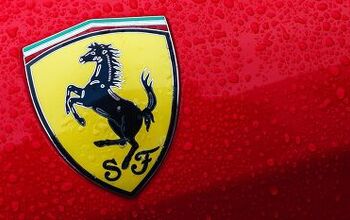

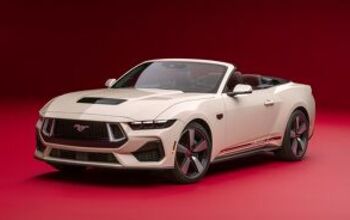


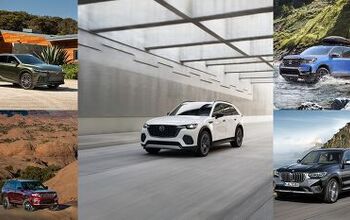
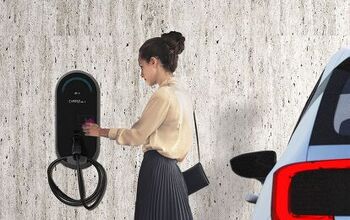


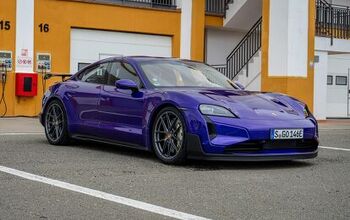



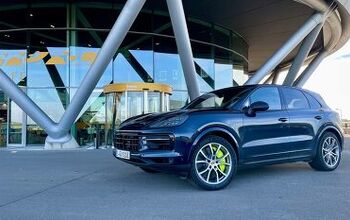
Comments
Join the conversation